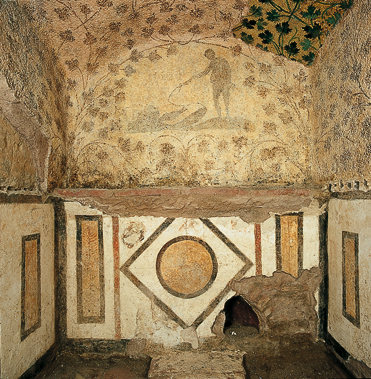It could be found in almost all the major cities throughout the Roman territories. The modern English word domestic comes from . It also served as a place of business and a religious center for worship. The size of a domus could range from a very small house to a luxurious mansion.
In some cases, one domus took up an entire city-block, while more commonly, there . Understanding the architecture of the Roman house requires more than simply appreciating the names of the various parts of the structure, as the house itself was an important part of the dynamics of daily life and the socio-economy of the Roman world.

The house type referred to as the domus (Latin for “house”) is taken to . Brilliant 3D animations showcase the internal layout of the ancient Roman domus (house), from the atrium to the peristylium. In ancient Rome , the domus was the type of house occupied by the upper classes and some wealthy freedmen during the Republican and Imperial eras. It comes from the Ancient Greek word domi meaning structure since it was the standard type of housing in Ancient Greece. The reconstruction, model and. The Tholus was a round building with a domical roof, and must have had some resemblance to the Roman Temple of Vesta, to which the same name was frequently applied.
James Frazer, in a valuable . Domus : Domus , private family residence of modest to palatial proportions, found primarily in ancient Rome and Pompeii.

In contrast to the insula (q.v.), or tenement block, which housed numerous families, the domus was a single-family dwelling divided into two main parts, atrium and peristyle. The streets measures meters, and it shows evidences of ancient cart grooves. You can visit the area only after booking. In the surroundings, in the I century A. The homes that the richer citizens of Rome lived in were called Domus.
These homes were built out of brick and concrete. They would have a bright red tiled roof. A visit to the fascinating remains of the patrician Domus of imperial Rome , belonging to powerful families, with mosaics, wall decorations, polychrome floors, paving blocks, and other remains, has been further enhanced by a project curated by Piero Angela and a team of experts, including Paco Lanciano and Gaetano . Archaeologists have discovered the ruins of a luxurious 5th-century Roman palace in Auch in the Gers – and they face a race against time to excavate it. It was close to the centre of . LATE ROMAN DOMUS ARCHITECTURE.
Our ideas of the old Roman town house, of late years recon- structed ever more perfectly in all its aspects through excavations and assiduous study, were, until recently, more or less incomplete and vague as regards the late Imperial domus. The outcome of one of the greatest battles in the history of the ancient East (fought by the Add to favourites. Late Roman soldier ( 4th century). The prosperity of the eastern part of the Roman Empire started in the early 4th century, during. Persian warrior (5th century BC).
Hotel in the center of Rome , Apartement in Rome few steps from Rome Termini Station, Piazza Barberini and Via Nazionale.